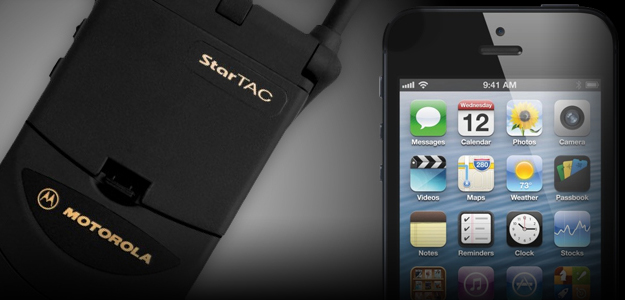 I have to admit; I started during commercial breaks in the football games while my family had slipped into tryptophan-induced naps. I scoured the gift guides, organized by category, price, and even whether the target hates Apple products or not. I was plotting gadget purchases for unsuspecting friends and relatives.
I have to admit; I started during commercial breaks in the football games while my family had slipped into tryptophan-induced naps. I scoured the gift guides, organized by category, price, and even whether the target hates Apple products or not. I was plotting gadget purchases for unsuspecting friends and relatives.
While it should come as no surprise by now that I am a raging techhead, I also like to use the holidays as an excuse to turn my friends and family into techheads as well. Anyone behind the curve in their gadgetry can expect to receive the latest version of said gadget. And I’m not alone. 76 percent of holiday shoppers are planning to give someone a gadget this holiday.
Still have a flip phone? Here’s a smartphone.
Still using that old digital camera from Sony that wrote on CD-RWs? Here’s a smartphone.
iPod with a clickwheel, huh? Here’s a smartphone.
Sega Dreamcast? Wow, I miss that. Let’s hook it up.
You get the point.
The receivers of my generosity are always grateful to my face. They usually make a valiant attempt at using their new toy. Some even become addicts and find themselves on the upgrade treadmill in no time, which would cause some guilt for me except that I’m right there with them. It’s hard to feel guilty about giving someone a gateway gadget if you’re an addict too.
But it’s come to my attention that these people might not have even known they were behind in the times. Perhaps they liked their old gadget because they knew how to use it, and it was good enough for their needs. If they weren’t forced up to date, would they have even noticed?
This works in all levels of technology. Remember before you first hooked up broadband at your house? Dialup was fine. It’s not like you were beating the desk in anger at every image that took a full minute to load. It was just how things were; you adapted your needs to those circumstances. You did your email and chat rooms, perhaps booked plane tickets and accomplished a little shopping.
Then the cable guy showed up and you soon wanted to download albums of music in less than a minute and whole movies in an hour. If a website didn’t render in five seconds, you got visibly frustrated. Why the hell does YouTube have to buffer right when the video is getting good?
So you called the guy back out for a very incremental upgrade, and while he’s here he might as well hook up the wireless router. I might get a laptop someday. And… yep, just ordered it. Now I can surf from the couch! Life has definitely improved. But a year ago, it didn’t seem like it needed much improving.
But those were self-inflicted wounds. My gift giving is psychological homicide. In some cases, I feel like I’ve stepped into a time machine and given a caveman a shotgun.
Humans rule this planet because of their adaptability. Fifty thousand years ago we needed those skills to survive against predators, ice ages, and famine. It’s only within the last 100 years or so that that adaptability moved from needs to wants. People had been doing just fine without cars. They didn’t need to fly. Their twice-daily newspapers were all the information they needed. They somehow still held elections, participated in the economy, and, unfortunately, fought wars.
This may be blasphemy on these pages, but in this holiday season join me in resisting the urge to force your technological ideals on your friends and family. Let them make their own decisions about their needs versus wants. If they feel they are missing out on Skyping with the family, they will figure out that they need a new computer. If they suddenly notice that their local video store is gone, they will figure out that they need Netflix.
Let’s be honest, these people were still going to get you a sweater either way.


